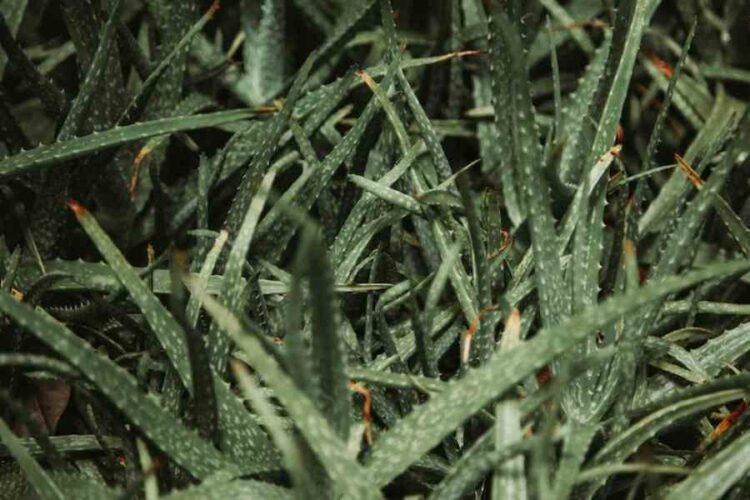Aloe vera farming is gaining immense popularity due to the increasing demand for aloe vera products in various industries. This versatile succulent plant offers numerous medicinal and cosmetic benefits, making it a profitable business venture. If you’re considering entering the aloe vera farming industry, this comprehensive guide is here to help. From understanding aloe vera’s properties to market research, cultivation techniques, harvesting, and marketing, we will provide you with valuable insights and tips on how to start and succeed in the aloe vera farming business.
How To Start Aloe Vera Farming Business?
- Conduct Market Research: Before starting an aloe vera farming business, it’s crucial to conduct thorough market research. Identify potential buyers and target markets for your aloe vera products. Analyze the demand and competition in the industry to determine the viability of your business.
- Acquire Suitable Land and Climate: Aloe vera thrives in warm climates with well-drained soil. Look for land that provides ample sunlight and has good irrigation facilities. If you don’t have access to suitable land, consider indoor farming or utilizing containers to grow aloe vera.
- Select High-Quality Aloe Vera Varieties: Choose aloe vera varieties that are known for their high quality and market demand. Look for varieties that are well-suited to your climate and have a reputation for producing a high yield of gel-rich leaves. Consider factors such as disease resistance, growth rate, and commercial value when selecting varieties.
- Set Up the Farming Infrastructure: Prepare the land by clearing it of weeds and rocks and ensuring proper irrigation systems are in place. Create a well-structured planting plan with appropriate spacing between aloe vera plants. Install shade structures or use shade cloth to protect young plants from excessive sunlight.
- Implement Effective Farming Practices: Follow proper farming techniques for aloe vera cultivation. This includes using organic fertilizers, practicing efficient irrigation methods, and implementing pest and disease management strategies. Regularly monitor the plants’ health and provide appropriate care, such as pruning dead leaves and maintaining weed control.
Understanding Aloe Vera
Aloe vera, scientifically known as Aloe barbadensis, is a succulent plant renowned for its medicinal and cosmetic properties. With a rich history dating back thousands of years, aloe vera has been used by various civilizations for its healing benefits. Here are five key aspects to understand about aloe vera:
Aloe vera contains a gel-like substance found in its leaves, which is packed with bioactive compounds such as vitamins, minerals, enzymes, and antioxidants. This gel is known for its soothing and healing properties, making it a popular natural remedy for various ailments. Aloe vera gel is commonly used to treat burns, wounds, skin irritations, and sunburns. It also has potential benefits for digestive health, immune system support, and oral hygiene.
Aloe vera’s nourishing and rejuvenating properties make it a sought-after ingredient in the cosmetic industry. The gel is used in skincare products, including moisturizers, lotions, creams, and face masks, due to its moisturizing, anti-inflammatory, and anti-aging effects. Aloe vera is also used in hair care products, as it can promote hair growth, reduce dandruff, and improve scalp health.
Aloe vera is a resilient plant that can thrive in diverse climates and soil conditions. It prefers warm climates and well-drained soil but can tolerate periods of drought. This adaptability makes aloe vera farming feasible in various regions worldwide. Cultivating aloe vera involves propagating the plant through offsets or seeds and providing appropriate care, including sunlight, water, and occasional fertilization.
Aloe vera farming offers environmental benefits due to the plant’s low water requirements and minimal need for chemical pesticides or fertilizers. It can be cultivated using organic practices, making it an appealing option for sustainable agriculture. Additionally, aloe vera plants have a relatively short growth cycle, typically reaching maturity within three to four years, allowing for regular harvests.
Marketing And Selling Aloe Vera Products
Marketing and selling aloe vera products effectively requires a strategic approach to reach your target audience and showcase the unique qualities of your products. Here are some key strategies for marketing and selling aloe vera products:
- Identify Your Target Market: Determine who your ideal customers are based on demographics, preferences, and needs. This could include individuals interested in natural skincare, health-conscious consumers, or businesses in the cosmetic industry. Understanding your target market will help tailor your marketing efforts.
- Build a Strong Brand: Develop a compelling brand identity that reflects the quality and benefits of your aloe vera products. Create a memorable logo, packaging, and messaging that resonate with your target audience. Emphasize the natural, sustainable, and beneficial aspects of your products to differentiate yourself in the market.
- Online Presence: Build a professional website that showcases your products, highlights their benefits, and provides information about your farming practices. Optimize your website for search engines to improve visibility. Leverage social media platforms to engage with your audience, share informative content, and run targeted ad campaigns.
- Local Markets and Events: Participate in local farmers’ markets, wellness expos, or trade shows to directly connect with potential customers. Offer product demonstrations, samples, and educational materials to attract attention and generate interest.
- Collaborations and Partnerships: Explore collaborations with spas, wellness centers, or natural product retailers to increase exposure and distribution of your aloe vera products. Forge partnerships with influencers or bloggers in the health and wellness
- Educate and Inform: Aloe vera has numerous health and skincare benefits, so educate your customers about the advantages of using aloe vera products. Share informational content through blog posts, videos, or newsletters that highlight the science behind aloe vera, its applications, and customer testimonials. Position yourself as a trusted authority in the industry.
- Product Diversification: Consider offering a range of aloe vera products to cater to different customer preferences. This could include aloe vera gels, creams, lotions, juices, or even value-added products like aloe vera-infused cosmetics or supplements. By diversifying your product line, you can attract a broader customer base and create opportunities for upselling and cross-selling.
Financial Management And Risk Assessment
Financial management and risk assessment are crucial aspects of running a successful aloe vera farming business. Here are key considerations for effective financial management and risk assessment:
- Budgeting and Financial Planning: Create a comprehensive budget that includes all the expenses related to starting and operating your aloe vera farming business. This should cover costs such as land acquisition, infrastructure setup, seeds or seedlings, equipment, labor, marketing, and ongoing operational expenses. Estimate your expected revenues based on market research and projected sales volume. Consider pricing strategies, market demand, and competition to forecast your income. Regularly review and update your budget to ensure it aligns with your business goals and adjusts for any changes or unforeseen circumstances.
- Cost Analysis and Profitability: Conduct a thorough cost analysis to understand the expenses associated with aloe vera farming, including production costs, overheads, and marketing expenses. Determine your break-even point, which is the level of sales at which your revenues cover all your costs. This will help you assess the profitability of your business and make informed decisions. Continuously monitor and evaluate your financial performance, tracking your revenue, costs, and profit margins. This will enable you to identify areas for improvement and make necessary adjustments to maximize profitability.
- Financial Record-Keeping and Reporting: Maintain accurate financial records, including income statements, balance sheets, and cash flow statements. This will provide you with a clear picture of your financial health and enable you to make informed decisions. Implement reliable accounting systems and software to streamline your financial management processes. This will help track expenses, monitor inventory, and generate financial reports efficiently. Regularly review your financial statements and reports to identify trends, patterns, and areas that require attention. This will allow you to make informed financial decisions and address any potential issues proactively.
- Risk Assessment and Mitigation: Identify and assess potential risks and challenges that may impact your aloe vera farming business. This could include market fluctuations, weather conditions, pests and diseases, regulatory changes, or supply chain disruptions. Develop a risk management plan that outlines strategies and measures to mitigate identified risks. This may involve diversifying your product offerings, implementing pest control measures, obtaining insurance coverage, or establishing alternative marketing channels. Continuously monitor and evaluate potential risks and adapt your strategies accordingly. Stay informed about industry trends, market conditions, and relevant regulations to proactively manage potential risks.
Conclusion
In conclusion, starting an aloe vera farming business presents an opportunity for profitability and growth in the ever-expanding market for aloe vera products. By understanding the plant, implementing effective cultivation techniques, and employing strategic marketing and financial management practices, aspiring farmers can embark on a successful journey in the aloe vera industry. Embrace the potential of aloe vera and take the first step towards a thriving business venture.
FAQ’s
How Long Does It Take For Aloe Vera Plants To Reach Maturity?
Aloe vera plants typically reach maturity within three to four years of cultivation. This timeframe can vary depending on factors such as growing conditions, climate, and the specific variety of aloe vera.
How Often Should I Water My Aloe Vera Plants?
Aloe vera plants are succulents and are adapted to thrive in dry conditions. It is important to avoid overwatering, as excessive moisture can lead to root rot. Water your aloe vera plants deeply but infrequently, allowing the soil to dry out between waterings. Generally, watering once every two to three weeks is sufficient, but adjust based on your specific climate and environmental conditions.
Can I Grow Aloe Vera Indoors?
Yes, aloe vera can be grown indoors. It is important to place the plant in a location that receives plenty of bright, indirect sunlight. Indoor-grown aloe vera may require more attention to ensure proper ventilation and prevent excess humidity. Additionally, using well-draining soil and avoiding overwatering is crucial for the plant’s health in indoor environments.
How Do I Propagate Aloe Vera Plants?
Aloe vera plants can be propagated through offsets, also known as “pups,” which are small plantlets that grow around the base of the main plant. Carefully remove these offsets and allow them to dry for a few days. Then, plant them in well-draining soil and provide adequate sunlight and watering. Propagation can also be done through seeds, but it is a more time-consuming process.
What Are The Common Pests And Diseases That Affect Aloe Vera Plants?
Aloe vera plants are generally resilient and not prone to significant pest or disease issues. However, they can occasionally face challenges such as mealybugs, scale insects, or fungal diseases like root rot. Regularly inspect your plants for any signs of infestation or disease, and take prompt action by using appropriate organic pest control methods or fungicides if necessary.







